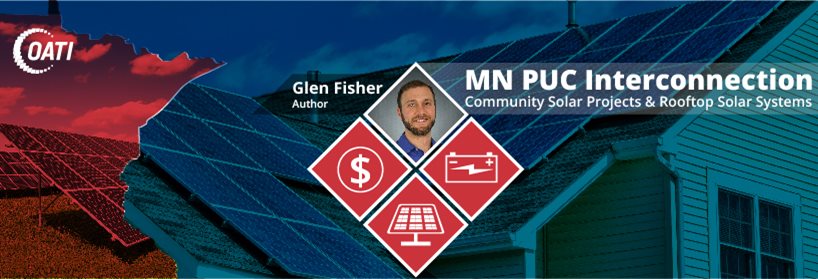Home » Blog » Grid Modernization » Minnesota Adopts Wholesale Interconnection Reforms
Minnesota Adopts Wholesale Interconnection Reforms
Following two years of proceedings, Minnesota’s Public Utilities Commission (PUC) updated interconnection standards. This was initiated after some early difficulties in Minnesota related to interconnection agreements from community solar gardens. In May 2016, three organizations petitioned the PUC – the Interstate Renewable Energy Council (IREC), Fresh Energy, and the Environmental Law & Policy Center (ELPC), seeking to establish new interconnection standards to improve the application process for connecting solar projects and other distributed generation to the grid. This will help interconnection applications to better align with the FERC model, the Small Generator Interconnection Procedures (SGIP), and several national best practices other states have implemented. As a result of this initiative, Minnesota became the third state in the Midwest in the last three years to adopt wholesale reforms on May 24, 2018.
Impact on the Market
The updates, which can be found under PUC Docket Number E-999/CI-16-521, are applied to the Minnesota Statute §216B.1611. These updates will be advantageous to create market-wide consistency, which is especially beneficial as energy grids and markets extend beyond state borders. Having common practices and agreed-upon standards will translate into cost and time savings related to distributed energy projects and will in turn help make Minnesota more conducive to the development of DERs.
Reviews and Updates
Additionally, because of this proceeding, the MN PUC will update interconnection standards on an ongoing basis. Previously, this was done every 12 years. This is an improvement as the rate of change and technology adoption in the energy industry is outpacing the old review process. Furthermore, mid-sized projects will be reviewed through a two-tier screening process as opposed to requiring a full study with the initial application — this will help speed up the turnaround time for projects and may allow local distribution engineers to engage in dialogue about potential interconnection projects earlier in the process. An additional end goal of these updates is that they will allow developers and consumers to better understand what to include with the interconnection application and how they are reviewed.
Inclusion of Energy Storage
Energy storage is also included specifically in the newly approved language. This is a very important step toward the advancement of energy resources on the grid. Storage is now commercially viable in numerous situations, and applications will become more frequent over the next few years. Energy markets across North America, including MISO, will soon have tariffs implemented that allow energy storage to participate in wholesale markets and provide grid services. The provision for energy storage in the interconnection standards provides clarity about the application requirements, helping pave the way for additional adoption.
About the Author
Glen Fisher is an Account Executive for OATI on the Smart Grid Solutions team and in Business Development for USA Microgrids, an OATI company. He is a Certified Energy Manager (CEM) and holds a Bachelor’s Degree from the University of Wisconsin – Eau Claire. Throughout his career, he has been passionate about helping organizations use energy more intelligently. Starting out in the renewable energy field, Glen was a Project Manager and Site Assessor for solar PV and solar thermal systems, as well as off-grid power and hydronic heating systems. After moving from that role he joined an Investor Owned Utility to work with commercial and industrial consumers on energy management. He has extensive experience delivering energy efficiency programs and effectively communicating with business leaders and key stakeholders on energy issues. He now works for OATI’s Smart Grid team interfacing with utilities and commercial/industrial customers in the state of Minnesota to utilize smart grid technologies, distributed energy resources and microgrids.
- July 17, 2018
